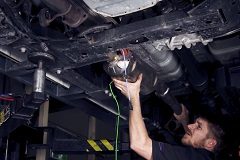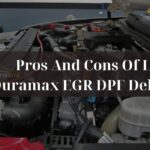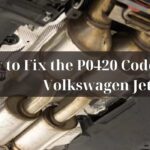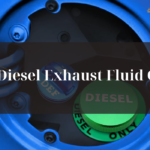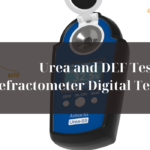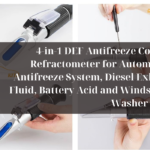PROS AND CONS OF REMOVING YOUR TRUCK’S DPF-Things to Know
Truck owners far and wide are feeling the hurt of dictatorship EPA regulations that make it burdensome to own the diesel trucks that we rely upon. If you own a 2007 or later model, you may have already run into problems with the legally mandated diesel particulate filter (DPF). While the DPF looks great on paper in reducing diesel exhaust hydrocarbons, particulate matter, and carbon monoxide by more than 90%, these filters are clogging up and difficult to service.
They are supposed to clean themselves using either passive or active regeneration cycles that heat up the metal filter to burn off the particulates into fine ash. The reality is that even the fine ash has to be cleaned and that these regeneration modes are both dangerous and poorly engineered maintenance cycles.
Reputation of the Diesel Engine
It is believed that 50% of the pollution in America is a direct result of combustion engines. The diesel engine is among the most problematic. Despite the diesel engine’s reputation for being highly efficient and surpassing gasoline engines in the miles per gallon scale, these vehicles noticeably emit black soot into the air during heavy acceleration.
The particulate is highly carcinogenic and can now be captured using a simple filter on the exhaust. Thankfully, the selective catalytic reduction (SCR) method that followed DPF works without the problems the DPF suffered.
Section 203 of the Clean Air Act makes it a federal offense to tamper with a DPF or remove it. The arguable exception to this rule is if the owner only uses it off-road. This is why many companies who are willing to remove DPF’s require the owners to sign waivers swearing that it will be used solely for off-road purposes.
The other problem is that any diesel truck with a DPF removed will immediately fail emissions inspections. In other words, while the DPF law may be difficult to enforce specifically against truck owners, you will run into complications with state officials if you remove it or tamper with it in any regard. The best advice to follow is do not DPF delete if you want to remain worry-free.
Regeneration Cycle Problems
The problem with the DPF design chiefly boils down to the regeneration cycles. If the DPF does not reach the correct temperature in a passive system because the truck never reaches sufficient highway speeds, then the passive system is virtually worthless. A passive system may use a platinum metal substrate much like a catalytic converter to react. In both instances, a vehicle will fail emissions if the exhaust does not reach sufficient operating temperatures on its own volition to burn off the trapped combustion byproducts.
The active regeneration systems are even worse. An active regeneration system typically uses a variety of methods to heat up the exhaust when the filter is getting clogged. A clogged filter creates excessive backpressure that reduces engine performance. The PCM may inject fuel, retard timing, increase EGR flow, throttle the intake, or increase turbo boost to heat up the exhaust.
Injecting fuel is the most troublesome method because it wastes fuel and strips away the film of oil protecting the delicate internal surfaces of the engine. Premature engine wear and carbon buildup from incomplete combustion are possible symptoms of active regeneration.
Worst of all, when a vehicle enters active regeneration mode, it may be limited to speeds as low as 5 MOH. If the vehicle is off when the regeneration mode begins, it may not be able to restart. Fires have even been reported when people parked their trucks in tall grasses and the regeneration mode heated up the exhaust in excess of 1000° F.
The other major problem is that even the fine ash needs to be cleaned once a year. This is highly problematic for a number of reasons. First, owners must locate a shop that is equipped with a special machine to clean the DPF. These machines require removal of the DPF (DPF Delete) to flush out the highly carcinogenic fine ash by using compressed air and vacuum.
Exhaust parts are difficult to service in the first place. Many exhaust systems are already oxidizing by the time they hit showroom floors on domestic vehicles. Places that do work on exhausts usually have to reheat the metal using torches to break up any unions.
If you throw in corrosion from road salt in the northern states, you are looking at a service nightmare. The exhaust parts may rust-weld into place and require a complete replacement of the entire exhaust system to simply remove and service the DPF. A new exhaust system on even a late-model light-duty diesel pickup truck can cost as much as $8,000.
An Overview of Removing DPF
The DPF removal requires access to the powertrain control module (PCM). The PCM must be reprogrammed to terminate the regeneration cycle and to disable any electrical components of the DPF system (such as exhaust injectors and temperature sensors). Afterwards, a straight pipe exhaust system can be custom fabricated, premanufactured, or retrofitted to the downpipe of the original exhaust. Removing the DPF may increase fuel efficiency by as much as 7 miles per gallon.
Pros
- Substantive Increase in Performance
- Substantive Increase in MPG
- Lower Maintenance Costs
- No Fire Risks
- Less Wear and Tear on Engine
- No Hassles from ReGen Cycles
Cons
- Voids Warranty Coverage
- Limits Use to Off-Road
- Arguably Illegal in Any Case
- Increases Pollution
- Automatic Failure at Inspection Stations
- Requires PCM Reprogramming
Remember you can also just clean the DPF filter.
Conclusion
The DPF system was poorly engineered. Although it looked great on paper, it did not fully consider how it would impact drivers in the real world. This is a traditional problem with engineering because it is only half math, physics, and science.
The other half is pragmatism of how well it will hold up in real-world driving conditions and the diversity of applications drivers will encounter. It is a breath of fresh air to see that the EPA is taking steps to clean up pollutants. However, the DPF’s should be recalled and replaced with selective catalytic reduction (SCR) systems.
- 304 Stainless Steel Exhaust Tip Compatible For 2015-2019 Audi Q7 4M 2.0t 3. SQ7 Design Quad Square Tips System Nozzle Muffler
- High-quality exhaust pipe, specially designed to improve the performance of your exhaust pipe, ensure excellent exhaust flow and greatly improve engine efficiency
- Using high-quality materials, high temperature resistance and corrosion resistance ensure that your exhaust pipe has a long service life under various driving conditions
- Unique design, enhance the exhaust sound, make your car show a strong sense of movement when shifting the clutch, and attract all eyes
- Suitable for the design of various models, easy to install, save time and energy, and make your exhaust pipe upgrade simple and convenient
- 304 Stainless Steel Quad Exhaust Tip Compatible For 2016-2024 Audi Q7 Upgrade SQ7 Look Black Nozzle Muffler Tailpipe
- High-quality exhaust pipe, specially designed to improve the performance of your exhaust pipe, ensure excellent exhaust flow and greatly improve engine efficiency
- Using high-quality materials, high temperature resistance and corrosion resistance ensure that your exhaust pipe has a long service life under various driving conditions
- Unique design, enhance the exhaust sound, make your car show a strong sense of movement when shifting the clutch, and attract all eyes
- Suitable for the design of various models, easy to install, save time and energy, and make your exhaust pipe upgrade simple and convenient
- High-Quality Materials: Flexible diesel heater exhaust pipe is made of high-quality stainless steel, making it durable, resistant to high temperatures, wear, corrosion, and rust. Its reliable quality and long service life ensure long-term, reliable use
- Exquisite Craftsmanship: Stainless steel exhaust hose boasts a smooth, burr-free surface and high manufacturing precision, resulting in superior performance. It offers excellent flexibility and ductility, allowing it to bend freely without breakin
- Product Size: Stainless steel exhaust hose is 120cm/47.24 inches long with a 1-inch inner diameter. Flexible diesel heater exhaust pipe reliable performance and tight seal reduce noise during operation of diesel air heaters, improving equipment efficiency
- Application: Stainless steel exhaust hose is suitable for vehicles equipped with diesel air heaters, such as cars, trucks, RVs, and construction vehicles. Parking air heater exhaust pipe tubing is suitable for a variety of environments and applications
- Easy Installation: Parking air heater exhaust pipe tubing comes with two matching pipe clamps for simple installation. Fuel tank diesel gas vent hose can be easily used to replace old or damaged pipes, making it ideal for replacing diesel air heater parts
